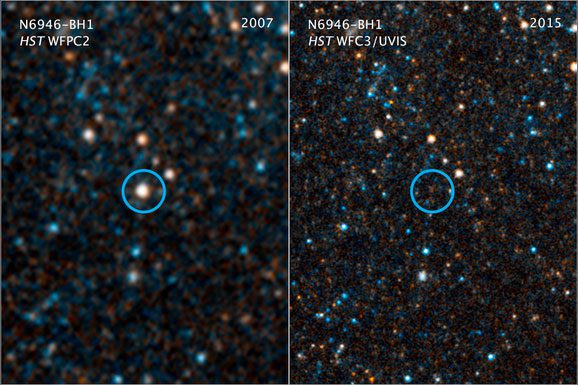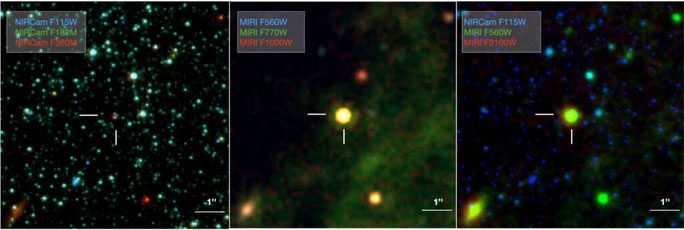In 2009, a “monster” star, 25 times the mass of the Sun, completely vanished. The James Webb Space Telescope has recently rediscovered it in a way that has left scientists utterly perplexed.
A team of scientists led by the University of Arizona (USA) has been making efforts to locate N6945-BH1, the mysteriously missing star, using a series of advanced telescopes.
Numerous theories surround the sudden disappearance of this “monster” star, which once shone brightly in Earth’s sky. The leading hypothesis is that it was a “failed supernova.”

The area of the sky where N6945-BH1 existed has been empty since 2009 – (Photo: ESA).
Instead of exploding at the end of its life to form a supernova—a brilliant nebula that can linger for years—some stars may collapse directly into dark black holes, a phenomenon known as a failed supernova. But all of this remains conjecture.
According to Science Alert, the aforementioned research team has been attempting to find answers by utilizing the Large Binocular Telescope (LBT), along with the most advanced instruments on NASA’s Hubble and Spitzer space telescopes, yet they still could not locate the star or its remnants.
Ultimately, the game changed when NASA invested in the James Webb Space Telescope, launched in 2022 and co-operated with ESA and CSA (the space agencies of Europe and Canada).

N6945-BH1 reappeared under the “eye” of James Webb.
James Webb saw it, but not as one entity; instead, it observed three different objects. What caused this “monster” star to split into three—and what it truly is—creates an even larger mystery than its initial disappearance.
Using James Webb’s NIRCam and MIRI instruments, scientists discovered a bright infrared source that seems to be the remaining dust shell surrounding the original “star” location.
However, the idea that this is a supernova seems entirely implausible, as no supernova could explode and then fragment a star into three separate stars.
The theory that scientists believe is most plausible is that what we assumed to be a supernova explosion, along with the “missing star” itself, is actually a burst of light from a merger of stars.
One of the three objects may have once been two stars that merged. The immense light from this event, combined with the light from the other three objects, led humanity to mistakenly believe it was a “monster” star shining tens of times brighter than the Sun.



















































